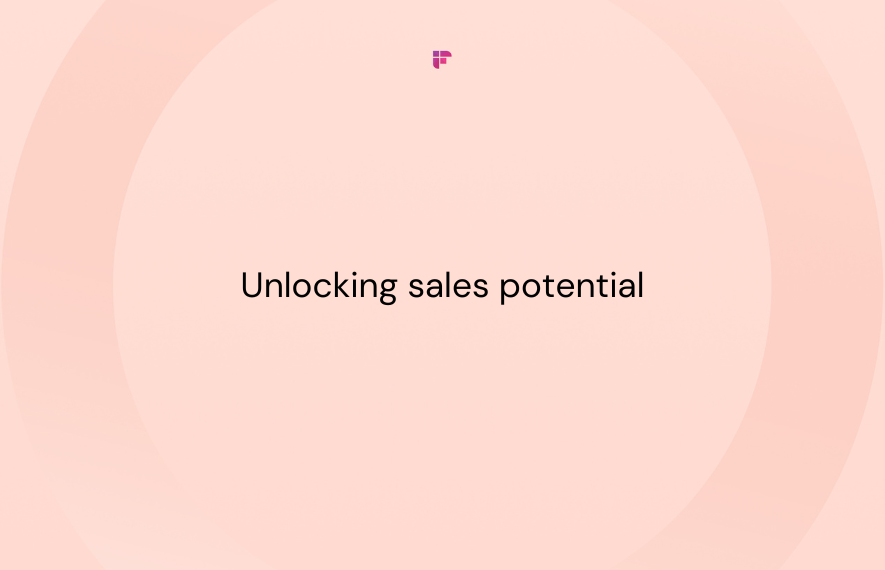Sales negotiation is an essential skill. While some are naturally talented negotiators, others learn with sales training and field experience. A salesperson of good caliber studies the buyer's character and style and molds the offering without pushing the boundaries too much.
But the question is, how do you know when to stop before a push becomes a shove?
The RAIN Group Centre for Sales Research launched a study titled 'Top Performance in Sales Negotiation Report' analyzing data from 449 buyers. All of them represented $2.59 million in annual purchases in 26 industries across the US, EMEA, and APAC. The study aimed to determine what separates a successful sales negotiator from an unsuccessful one, the best tactics for sellers, what buyers want, etc.
The research found that the best performers understand the power and leverage held by each side during negotiation. The key is to increase your leverage. Whichever side has the most power will call the shots.
But at the same time, you need to remember that the contract you draw is only as good as the terms negotiated by you and the person dealing on the other side of the table.
As is the rule in poker, you do not play the cards; you play the player. Familiarizing yourself with the weaknesses and strengths of the business they represent can help you win the game even with bad cards.

Sales negotiations have evolved over the last decade. The buyers are now more informed and aware of their options. They know about you, your prices, your offerings, your other competitors in the market, who are offering the same services at a better rate, and more.
The only solution is to upgrade your sales negotiation techniques and strategies for closing more sales deals.
Along with an engaging sales demo, you must know how to negotiate your worth. The chances are that you will be too careful in your approach. It is always better to play safe than reckless, but you need to take calculated risks.
You have to be smart and confident in your skills to get the best deal for you. As per the same report, 'Top Performance in Sales Negotiations,' most sellers cave and give into price concessions, but most buyers admit to paying more.
Negotiation, in the simplest terms, means compromising. Your conditions are not acceptable to the buyer; in turn, their suggestions do not sit well for you or your business. When you seem to have reached an impasse, both parties need to cut back on a few terms.
Negotiation has to be in a way that is not unfair or unjust to either one of the parties. A successful business negotiation must be a two-way street of give and take.
Good negotiations forge long-lasting relationships and build trust between the two parties. An agreed-upon deal avoids any future conflicts or problems. It is better for both parties' business relations.
It provides a long-lasting solution based on solid hours of negotiations, agreements, and discussing every conceivable solution rather than opting for hurried, short-term deals.
Challenges in Sales Negotiation
During sales negotiation, an important thing to remember is to ask yourself if you really understand the root issue at stake. Frequently, during the negotiation process, there arise misunderstandings as to what is the basis for the negotiation.

Both parties are unwilling to take the blame, turning the relationship sour and never finding the underlying cause or solution to the problem.
Let us look at this Sarah Talley Vs. Walmart case study to understand this better.
Scenario:
- Sarah Talley owned a small pumpkin and watermelon farm named the Frey farms. She wished to sell her goods to Walmart and get fair prices for her goods but competition from other vendors, who were ready to sell their goods at a cheaper price, made it tough to get a fair price for her goods.
Problems:
- Walmart’s focus on ELDP (everyday low prices) meant they will try to secure the cheapest deal.
- Walmart could find tons of other farmers who would be willing to work with them on their conditions.
- How Sarah would negotiate a win-win deal in such a scenario.
Outcome:
- Sarah took the time to study Walmart’s culture and found areas for saving money in supply chain management. For example, she switched her supply transportation vehicle from tractors, which cost her $12,000 each, to school buses, which cost $1,500 each.
- Instead of a supplier-retailer agreement, she successfully negotiated a co-management supplier agreement (Business services provided by the external vendor). Which entailed sharing of responsibility in managing inventory levels and sales.
- The agreement would help her customer save money and also help Sarah improve her margins.
Learnings:
- When dealing with a giant like Walmart, you need to find a value addition that appeals over and above the routine offer to negotiate a partnership that is mutually beneficial. It is smarter and more time-efficient to be a problem solver.
- Take the time to understand a client’s culture and create a proposition accordingly. Try to bring them to the table with ‘rather than replacing me, work with me to cut costs and maintain this effective partnership.’
Salespeople, fresh-off-the-boat or seasoned players, are equally susceptible to falling for specific traps. It is true that with every table session, you gain some new insight, grow a little wiser, and become confident in your techniques.
However, it is always better to cover all your bases and be aware of possible sales traps that you might get blindsided into.
Here is a list of critical issues in negotiations you should watch out for –
Overselling
Believing in your product or service is essential, but overvaluing it can come back to bite you.
The need to oversell your product stems from the endowment effect. In behavioral economics, the endowment effect refers to an emotional bias we form with things we own. This bias makes us overvalue something regardless of its market value.
This seems to be the reason for many sales deals falling through. When you negotiate, you have to prove your business's value, why you deserve the agreement you are asking for, and how your business adds value to their lives/business. According to OMG'S Survey, 68% of the salespeople were weak at selling value.
Consulting third parties with unbiased opinions will help you better analyze the value of your product.
Prospects Asking for a Discount Before They Sign the Deal
Offering early-bird discounts or other discounts are an attractive way to tempt new prospects. However, it would be best to be careful with how much and how often you give it.
According to "Study on Discounts" by ProfitWell in 2018, customers offered discounts of 30% or more are 15-40% less willing to pay when it is time to renew their contracts.
When you give unnecessary discounts, you undervalue your product's worth and turn it into a commonplace commodity whose merit just depends on how much cheaper it is than others in the market.
To save yourself from a discount request for SaaS, encourage the customer to come back for a chat once they have used the product for a few days. Persuade them to give the free trial a chance first. 9 out of 10 times, people who are not a good fit for the product, would opt out by themselves.
Those who come back can be offered a fair price as you know they are here for the long haul, and therefore, they are of greater value to you.
Offering Unappealing Deals
Your product may be excellent and has the potential to get you some fantastic deals, yet you blow it by not working on the best way to present it to your prospects.
A well-structured sales discovery call brings you the customers, but it is good negotiations that seal deals. Therefore, it is essential you objectively assess your terms and conditions before presenting.
Change the language you use. Make it persuasive instead of assertive. Avoid using words with negative connotations. Instead of talking about things you "cannot" do, try to talk about something you "can" do.
What Are The Skills Needed for Sales Negotiation?

Not all negotiators have to embody the 'Wolf of Wall Street' my-way-or-the-high-way style when sitting in a negotiation. Broadly speaking, there are five sales negotiation techniques or styles.
- Competing – It's an assertive style where the negotiator focuses more on the substance than the relationship.
- Avoiding – They are avoiders. Neutrals. They aren't much focused on the substance or the collaborations.
- Accommodating – Here, the relationship is as meaningful as the substance. They are moderators looking for a middle ground.
- Compromising – This is the split-the-difference style of negotiation. It leads to reasonable satisfaction for both parties. However, some sales experts believe it does more harm than good.
- Collaborating – They are innovative, creative thinkers that take time to find the best possible solution that is suitable for both parties.
Some are born charismatic, smooth talkers who know how to get their way in any situation. However, others have to take time to train themselves and cultivate the skills needed to be a good negotiator. Here are some skills you can learn to up your game.
Soft Skills
Many top performers are aware of how soft skills play a crucial part in getting the desired deal. Your interpersonal skills set the mood right before the negotiation takes place. If you have a good rapport with the other party, the process becomes much smoother.
As per the States of Sales report 2019-20, 87% of salespeople who believe themselves to be successful are continually working on their soft skills. Being a good listener is vital as you also have to pick up on what may be left unsaid.
Read between the lines. Let your prospect talk first and try to recognize their real concern – is it a lack of confidence in your product, long-term doubts, or something else,
You can only find a solution once you know what the problem is.
Hard Skills
Product knowledge and business communication are necessary skills a good negotiator must possess. Along with it, making use of the best productivity apps and available business software would also help in easy cruising.
Opt for sales enablement through the latest and best the tech world has to offer. Training on topics of conflict management and resolution will assist you in navigating tough negotiations.
Researcher
Your buyers come to the table ready with an arsenal of knowledge about you, your company, your previous deals, and everything of relevance. So it goes without saying that the best way you can cut a good value for yourself would be to do the same.
Try to go in prepared with some idea about three main things – why is the customer buying what you are selling (why do they need it), how invested they are in making the deal, who exactly is in charge of calling shots, and what their budget is?
You must also be familiar with your own sales numbers and requirements. This knowledge will help you decide the kind of concessions and discounted prices you can offer.
Staying level-headed
A negotiation can be a high-wired, charged atmosphere. With tensions running high, it is essential to keep your emotions in check. Even if your prospect gets hot, you need to stay grounded and keep the discussion as friendly and professional as possible.
Getting overwhelmed mid-negotiation may result in a careless slip of the tongue that can ruin the deal and put a damper on all future collaborations. Handle all objections tactfully, remind them you are here to find a mutually beneficial solution.
Tips for Effective Sales Negotiation
Let's go through some tips that will help you master your negotiation skills.
1. Tech Integration
On top of the sales negotiation trend, 2020 was about integrating technology with your sales and negotiation. More and more companies are switching to automated lead generation to save time spent on manually chasing leads.
Technology-based sales strategies compress the negotiation cycle into lesser interactions. You can make a list of terms your prospects can check in advance. It saves time and unnecessary meetups.
2. Personalize
It is human nature to bond with people who share the same values as you. The more comfortable they are with you, the more likely they are to see eye-to-eye with you moving forward.
According to the book, 'Never Split the Difference: Negotiating as if Your Life Depended on It,' mirroring, a technique where you subtly copy your prospect's gestures or speech, helps build rapport and empathy. Remember to practice on others before you do it with a prospect.
Also, try to find common ground with the prospect, same school, similar values or homes, etc. According to Epsilon Marketing's findings, 80% of the consumers prefer to do business with a company that offers a customized experience.
3. Rely on stats
Sell more, negotiate less. Many companies turn this into reality by opting for a more transparent system where the customers can see and evaluate results by themselves.
According to research by IBM, people prefer to buy from those that show the qualified product with data-driven benchmarks, which makes sense because numbers are pure facts. Saying something is "90% more effective" than something "most likely to work" shows that your statement is backed by research and result.

A data-driven approach stops you from chasing unproductive leads. Salespeople today are 33% more likely to prioritize leads based on 'propensity to buy' than based on intuition (16%).
4. Be specific
Don't give them a range because it is a moot point. For example, if somebody says, 'I am willing to give you a discount between 10-15%', nobody will go for the 10%, so what's the point? Give out a specific number and then go up or down according to your disposition.
5. Best Alternative to a Negotiated Agreement (BATNA)
BATNA, in short, means to have a Plan B. You need to know the best possible deal if you fail to reach an agreement with your initial offer.
Be decisive about your priorities before you go in with your plan A. Set bars about things that are completely non-negotiable. A BATNA helps you ascertain a threshold before you reject the offer.
Do not forget to do a BATNA for your prospect as well. This will help you get a more condensed understanding of the best-case scenario for both parties.
This brings us to our next point.
6. Walking Away
If you do not value your product, nobody will. Know your worth before a negotiation, so you know where to draw the line. Even if you get the deal after making some unprofitable concessions, you will end up with a difficult client for the rest of the contract time. All of which just spells loss in the long term.
Here are some signs that indicate that the prospect does not really value your offer –
- Your best, most lenient conditions are not good enough for them.
- Their demands are incredibly unreasonable.
- They do not seem interested in collaborating.
Sometimes, when you indicate that you are ready to walk away, they might suddenly become a lot more cooperative.
Conclusion
Every year with new technology, sales negotiation techniques and trends keep changing. The strategies too are ever-evolving and upgrading. You are free to use the old, the new, or create a hybrid of your own. What was a solid technique in the past may just fizzle out when applied today.
The only constant is the concept of negotiation and its premise. You turn each negotiation richer when you think about adding value not just to your business but to the other person's demands as well.
It would be helpful to remember that you should not shy away from asking for help when things get stuck at your end. Words 'Come on, you got to help me out here,' are powerful enough to nudge the situation in your favour.
Don't forget the person on the other end is here because they are interested in the deal and want the best possible outcome.








